|
Tuesday--June
12
|
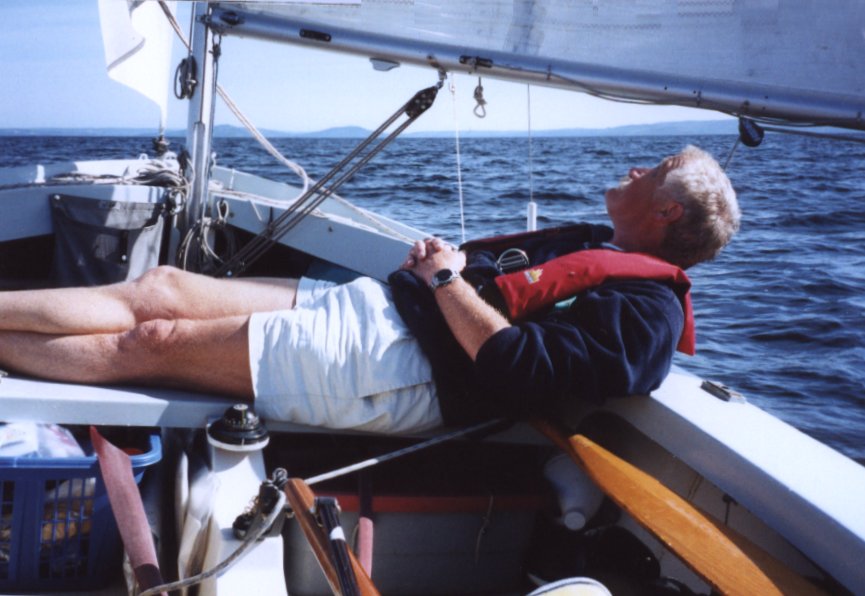 |
|
.. |
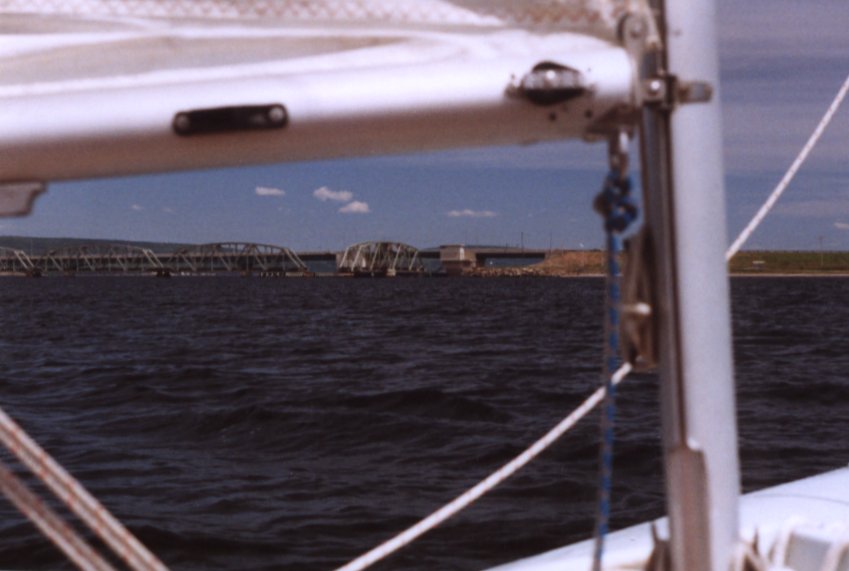 |
|
.. |
| There can be tidal currents of three knots through the narrows at Barra Straits. I wanted to check the current’s speed and direction before piloting Naomi between the railway and road bridge abutments. We anchored Naomi in a nearby cove and walked onto the road bridge. The adjacent railway bridge is left open until a train is expected before closing. I didn’t see enough current between the abutments to cause us any difficulties. |
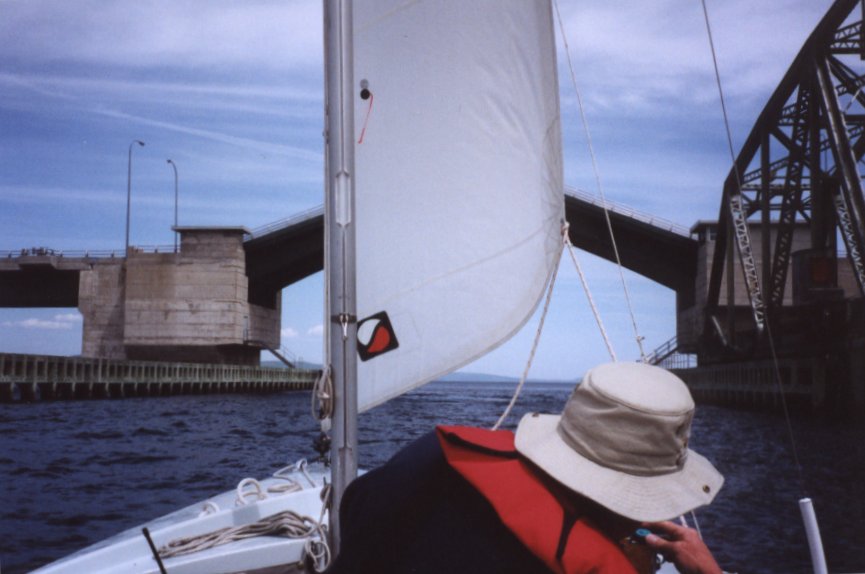 |
|
.. |
| While chatting with the bridge operator in his control room, we mentioned our plans to visit the Highland Village Museum a few miles away. The bridge operator suggested we borrow his car and drive to the museum. We thanked him but declined his generous offer. I offered to lower the mast and row Naomi under the bridge but he wouldn’t hear of it. With so little marine traffic, I suspect he looked forward to this chance to lift his bridge. As we sailed towards the bridge, Allan talked to the operator on the VHF radio. Bells on the road barriers began to clang and red lights flashed. From the depths of the bridge foundations, mechanical groans and squeals arose. Slowly the bridge deck split in two and began to rise. What a pandemonium we were causing! I felt I should have been grasping the wheel of a 600 foot bulk carrier rather than holding the tiller of a mere 16-foot sailing dinghy. |
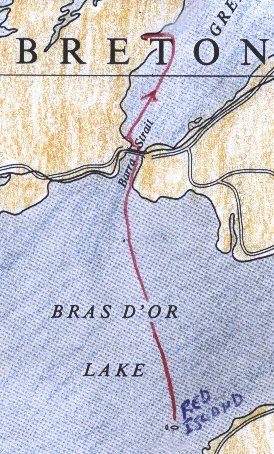 |
| After landing Naomi on a beach in Iona, we walked to the Highland Village situated on a hilltop overlooking the Bras d’Or Lakes. The museum consists of log cabins and frame houses and buildings from Cape Breton’s earlier days of Scottish settlement. The buildings were moved here from their original sites across the island. |
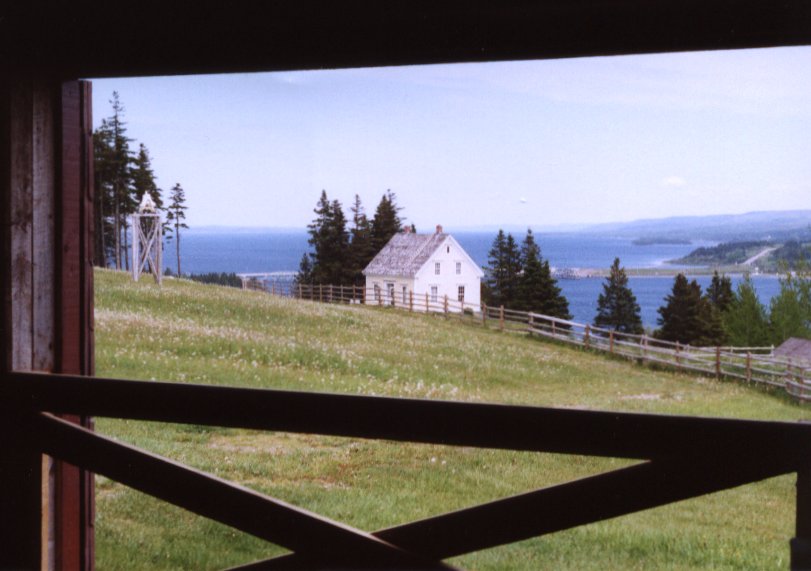 |
|
.. |
| Tourists
learn
about the first waves of Scottish immigration from the Hebrides in the
late 1700's and successive mass immigrations into the 19th
century.
There were few visitors that day and the blacksmith showed Allan and me
how an anchor cable was made. No butt end welds here. He
carefully
scarfed and hammered a link into shape before giving it to Allan.
With all the demonstrations, we noticed how labour intensive the
economy
was until the middle of the 20th century.
From Iona we headed up Great Bras d’Or Channel. Our goal for the night was Maskills Cove. The sky became overcast and fog closed in as we arrived at our destination. |
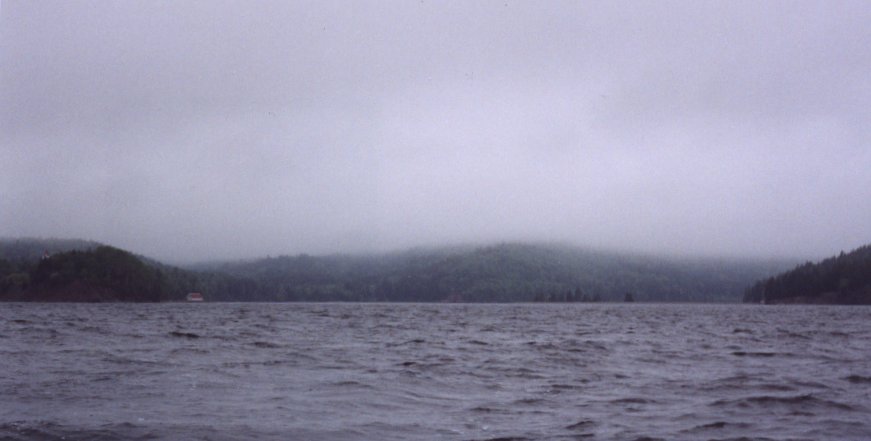 |
|
.. |
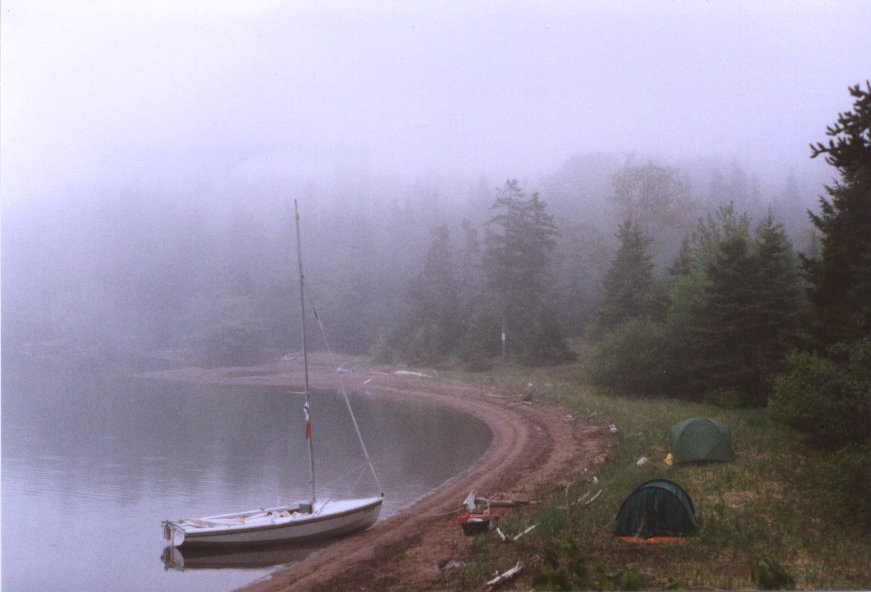 |
|
.. |
| As dusk fell, a chorus of noises arose from the bog behind our tents. Al’s eyes lit up like a deer’s eyes trapped in a car’s headlights. Quickly he scurried around the campfire to put the blaze and myself between him and whatever evil lurked in that black lagoon. I tried to reassure Al. The high pitched din was just the call of hundreds of small frogs called "peepers" and the baritone croaking from larger bullfrogs. In spite of my efforts, Al remained unconvinced and he slept uneasily that night. |
| ..
Wednesday--June 13 Although the morning was quite foggy, we left Maskills Cove anyway. Winds were forecast to increase to 20-25 knots with gusts to over 30 in the channels by noon. We headed for the town of Baddeck as the fog gradually lifted. During the summer it is the yachting centre of the Bras d’Or Lakes. .. 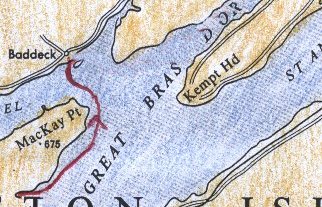 I thought Al would see a similarity between Baddeck and Cowes, an English yachting centre I’ve read about. His expectations of a wild nightlife ashore with fellow yachties were dashed. The moorings were all empty and only a handful of tourists roamed the streets. I was somewhat vindicated though. We did see our first sailboat underway. A tourist boat motor sailed past us with a load of vocal schoolchildren onboard. We decided to stay in Baddeck till the weather improved later in the day. We visited the liquor store and then the grocery store. When I go to grocery stores, I head for the canned goods section and then for bread, cheese, and potatoes with some snack food to top it off. Allan led me through sections of a grocery store I’ve never explored before. His questions like “Do you like this?” or “Have you tried that?” were met with a negative response. We loaded up on supplies including exotic powders, piquant spices, and unusual vegetables, which he’d concoct into tasty meals beside our campfires in days to come. Before next years AGM, I’m sending in my nomination for Al to the Executive Committee as the United Kingdom Wayfarer Cuisine Secretary. |
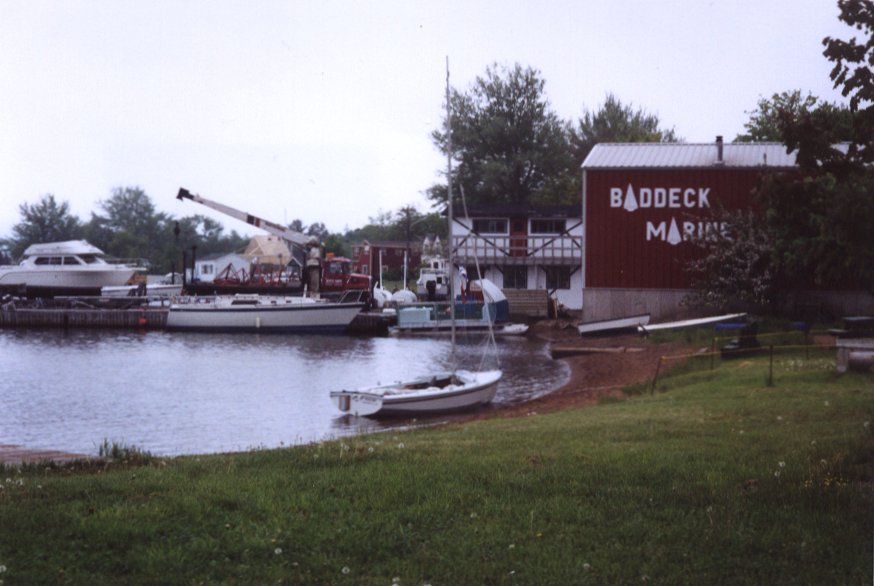 |
|
.. |
| After stowing our supplies in Naomi,
we visited the Alexander Graham Bell Museum to wait out the
weather.
The museum is a National Historic site. After 1885, Bell and his wife,
Mabel, spent much of the year in their summer home at Beinn
Bhreagh.
Not only was Bell involved with the invention of the telephone.
He
and Mabel were engaged with the education of deaf people and
experiments
in medicine. Bell attracted other creative inventors and
engineers
to his mansion.
Among their many accomplishments was the flight of the Silver Dart in 1909. The Silver Dart flew from Baddeck’s frozen bay to become the first heavier-than-air flight in Canada. A hydrofoil craft they developed set a world’s speed record in 1919 on the bay. The weather appeared to be
improving
and we didn’t want to stay overnight in Baddeck. The town was
sheltered
by high hills from weather conditions in the channel. As Naomi
entered the Great Bras d’Or Channel, we found a strong wind still
funnelling
down the passage. Rapidly we reefed the main and furled the
jib.
With all our food supplies and liquid ballast, capsizing wasn’t a worry
for us. Naomi’s spars would carry away or her sails split before
she was going to roll over. In spite of our increased tonnage and
reduced sail area, Naomi gained speed in the boisterous sea
conditions.
Now I asked Allan to keep a sharp watch ahead for hazards. It was
time to inform him that I didn’t have a chart for this section of the
channel
and hadn’t sailed here either.
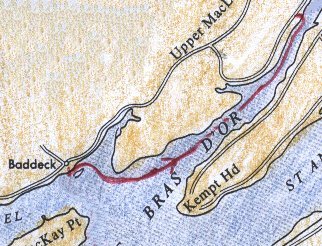 Navigation buoys were moored towards the centre of the channel. We passed close to them for awhile but soon we’d have to leave mid-channel and head for shore. Not only was the day ending but danger lay ahead also. The narrows in the vicinity of Seal Island Bridge is the major entrance for the ocean into the Bras d’Or Lakes. The normal tidal velocity in this stretch can reach 4-5 knots. With the flooding tide meeting this contrary wind, a nasty and confused sea lay ahead of us. Suddenly we spotted a tan-coloured sand spit protruding from the dark green backdrop of coniferous trees. We ducked around this point into sheltered waters. Naomi’s bow barely grazed the water’s edge before our evening routine began. We unloaded gear, pitched tents, and gathered firewood. In a matter of minutes, Allan and I relaxed before our cozy campfire. We sipped gin and tonics garnished with lemon slices. Before long, Al would be looking at the food locker and mumbling to himself: "Should it be a Cantonese Chow Mein, a ‘Gratin de Fruits de Mer’, or perhaps spaghetti with a garlic and beer sauce?" Soon we were devouring hors-d’oeuvres followed by a tasty meal washed down with an abundance of dry red wine. This was Wayfarer cruising at its finest! |
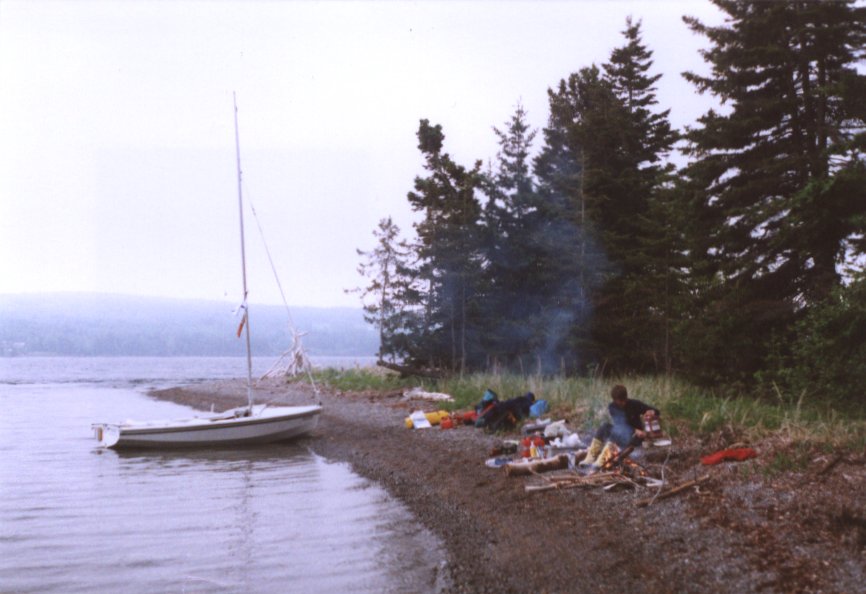 |
|
|